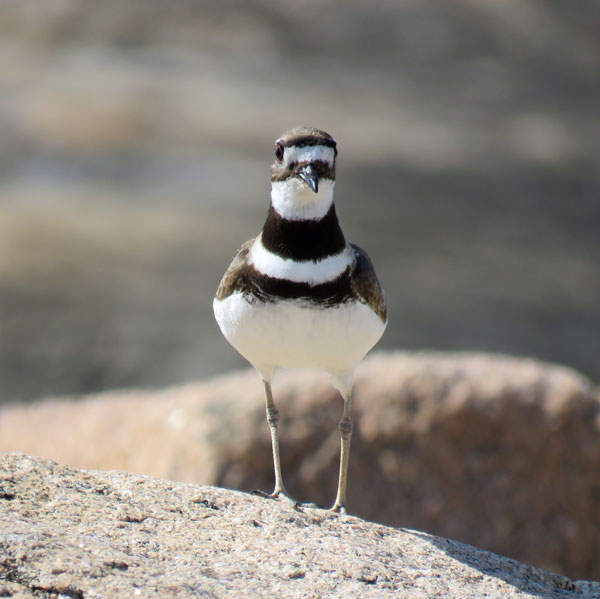
Sunday we took a walk at Avery Point on a hot day, the temperature was way above average for this time of year, but we can park on campus without a permit on the weekends so we decided to give it a try. A nice sea breeze made it bearable.

A killdeer surprised me by standing very still, as curious about me as I was about him/her. Because the 30th anniversary of my mother’s death is coming up on Thursday, Mom and her love of birdwatching have been much on my mind. At home I decided to pull out her well-worn 1947 edition of A Field Guide to the Birds by Roger Tory Peterson, including her life list. She first saw a killdeer on March 17, 1951. She was 19 years old.

It looks like she started birding in earnest that year. There are a few birds marked with a check, which she probably remembered seeing before she started to keep a record. Lots of Florida birds were spotted in the 1960s, when I was a child and we made many trips down there to visit relatives. The last new bird she noted was a red-breasted nuthatch on December 20, 1989, 17 months before she died at the age of 59.




Mom recorded 5 kinds of gulls: great black-backed, herring, California, ring-billed, and laughing.





Mom recorded her song sparrow on March 20, 1951. This one was singing such a pretty song, the moment filled my heart with joy.





Funny thing was, I was hoping to find a Canada goose family with goslings, but we didn’t see any. People have been posting pictures of them in the beach’s Facebook group. Oh well. Encountering the killdeer was a welcome blessing, an even better experience. Another lesson in flexibility and living in the present moment. And it was nice that the killdeer led me to take a peek back into one of my mother’s life’s passions.
Mom first saw a mourning dove on May 23, 1951. A little synchronicity there. This walk was taken on May 23, 2021, seventy years later. Ever since my mother died I’ve been comforted by the mourning doves who keep coming to my garden and my balcony, as they keep reminding me of her presence and love.








































